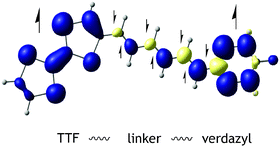Towards understanding of magnetic interactions within a series of tetrathiafulvalene–π conjugated-verdazyl diradical cation system: a density functional theory study†
Abstract
The intramolecular magnetic exchange coupling constants (J) for a series of

- This article is part of the themed collection: Highlighting Canadian research in PCCP

 Please wait while we load your content...
Please wait while we load your content...